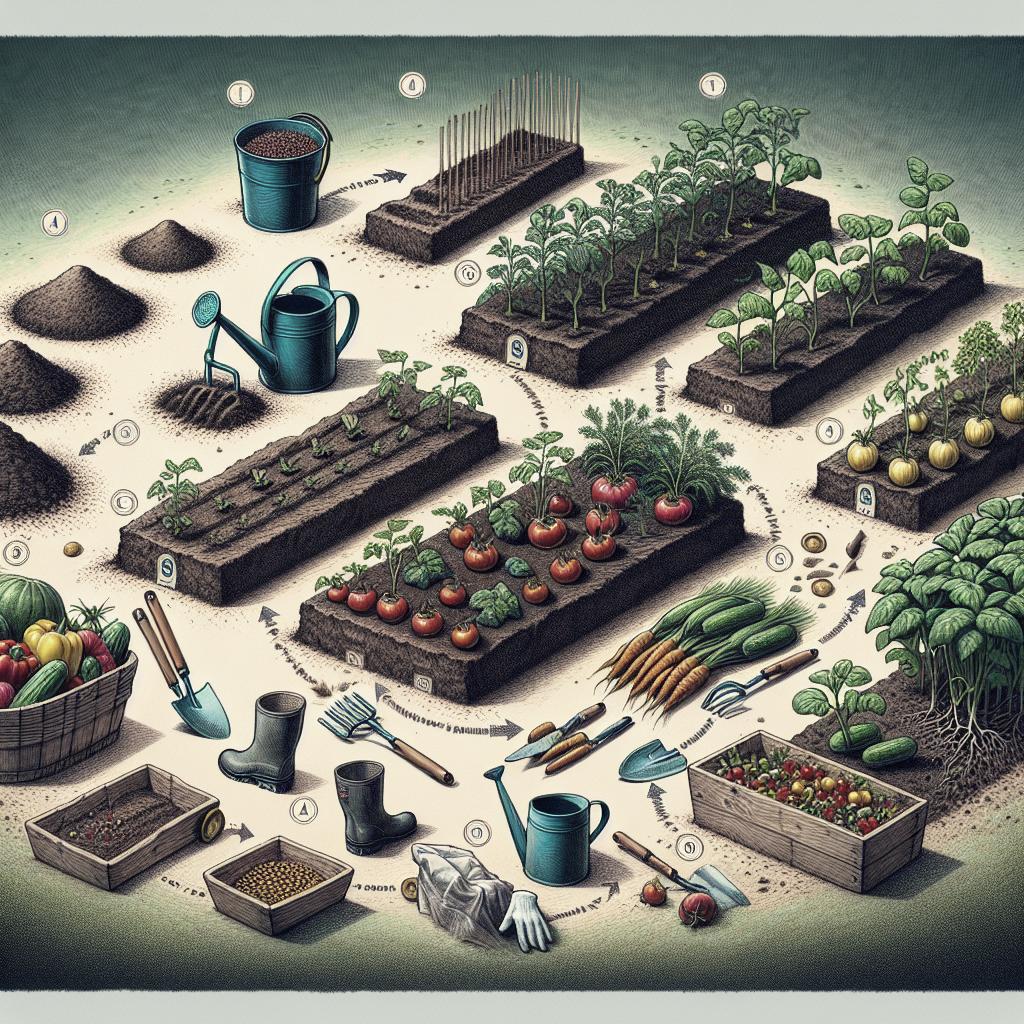“`html
Introduction: How to Build a Fish Pond or Garden Pond
Imagine a serene oasis in your backyard, teeming with vibrant fish and the gentle sounds of trickling water. Creating a garden pond might seem daunting, but with the right guidance, it’s a project that’s both rewarding and achievable. This article will walk you through the step-by-step process of constructing a garden pond, from choosing the perfect spot to adding those finishing touches. You’ll learn how to dig a hole, lay down a pond liner, add water, secure the liner, and finally, give your pond an aesthetic appeal with rocks and plants. Whether you’re a seasoned gardener or a DIY enthusiast, this guide will equip you with everything you need to transform your outdoor space into a tranquil retreat.
Step 1: Digging the Hole
Selecting the right location is the first crucial step in your pond-building journey. Choose a spot that receives partial sunlight to support plant growth while preventing excessive algae. Once you’ve identified the perfect area, outline the pond’s shape with a rope or garden hose, considering both aesthetics and functionality. A flexible outline allows you to adjust your design easily before committing to digging.
With your outline in place, begin digging the hole. Depth is important; an ideal pond should be at least 18 inches deep to accommodate a variety of aquatic plants and fish. Use a spade and a shovel, ensuring you dig evenly while maintaining the desired shape. As you dig, keep the removed soil nearby to use later for leveling and creating surrounding garden features. Remember to smooth the bottom and sides of the hole to prepare a sturdy base for the liner.
Step 2: Lay the Liner in the Hole
A high-quality pond liner is essential to prevent leaks and ensure durability. Once the hole is ready, lay down a protective underlayment to shield the liner from sharp rocks and roots. This underpad acts as a cushion, prolonging the liner’s lifespan. Carefully spread the liner across the hole, starting from its center and working outward. Allow the edges to drape over the sides; these will be trimmed and secured later in the process.
It’s crucial to minimize wrinkles and folds in the liner during this step. Such imperfections can lead to weak spots that increase the risk of punctures. Use your hands or a soft broom to smooth out the liner, adjusting as necessary. The liner should conform to the hole’s contours, providing a snug fit. Once satisfied, weigh down the liner edges with rocks or bricks temporarily to hold it in place.
Step 3: Put in Some Water
With the liner effectively positioned, it’s time to fill the pond with water. Begin slowly, aiming a steady stream from a garden hose at the center of the pond. As the water level rises, it will naturally press down and adjust the liner, creating an even surface. This gradual filling helps the liner settle into its final position, making it easier to smooth out remaining wrinkles.
As you fill the pond, take the opportunity to shape any loose edges of the liner, ensuring a tight fit. Be sure to check that the water’s level is where you want it and allow for natural evaporation and rainfall. Once the pond is full, you’ll have a better understanding of its final appearance, which is crucial when moving on to add rocks and other aesthetic elements.
Step 4: Secure the Liner
After filling your pond, it’s essential to secure the liner to maintain the pond’s structure and prevent water loss. Trim the liner edges, leaving around six to eight inches extending beyond the pond’s perimeter. This excess ensures flexibility during adjustment and allows room for securing methods.
Use heavy stones or landscaping rocks to firmly anchor the liner’s edges. Placing these rocks strategically will not only secure the liner but also enhance the pond’s natural appearance. Consider embedding the liner into a shallow trench around the pond’s edges for added stability. Firmly pack soil around the rocks and the trench to hold everything firmly in place, giving the pond a polished, finished look.
Step 5: Position Rocks
Rocks play a vital role in both the aesthetic and functional aspects of your garden pond. Begin by arranging rocks around the pond’s edge, blending different sizes to create a more natural appearance. This rock boundary not only keeps the liner secure but also adds a touch of elegance to your pond.
Incorporating submerged rocks and stones adds dimension and habitat opportunities for aquatic life. Larger stones can be used as stepping surfaces or seating areas, while smaller pebbles and gravel can be utilized at the pond’s bottom. Select rocks that match your landscape style and ensure they are stable and secure, preventing any from inadvertently falling into the pond.
Step 6: Final Touches
Now that the structural components of your garden pond are in place, it’s time for the details that will bring it to life. Introduce aquatic plants like water lilies, lotus, and marginal plants that thrive in shallow water. These plants add vibrancy, aid in oxygenating the water, and provide shelter for fish and other aquatic creatures.
Consider adding fish to your pond, such as goldfish or koi, to enhance its liveliness and create a dynamic ecosystem. To further refine your pond, integrate features like waterfalls, fountains, and decorative lighting. Not only do these elements enhance the pond’s beauty, but they also contribute to aerating the water and improving its overall health. With these final touches, your garden pond will be a stunning centerpiece, offering tranquility and charm for years to come.
Lessons Learned
| Step | Description |
|---|---|
| Digging the Hole | Choose a sunny location, outline the pond shape, and dig to at least 18 inches. |
| Lay the Liner | Use an underlayment for protection and spread the liner smoothly. |
| Put in Some Water | Slowly fill the pond to adjust the liner and eliminate wrinkles. |
| Secure the Liner | Trim and anchor the liner with rocks for stability and aesthetics. |
| Position Rocks | Arrange rocks around and inside the pond for a natural look. |
| Final Touches | Add plants, fish, and decorative features to enliven the pond. |
“`


